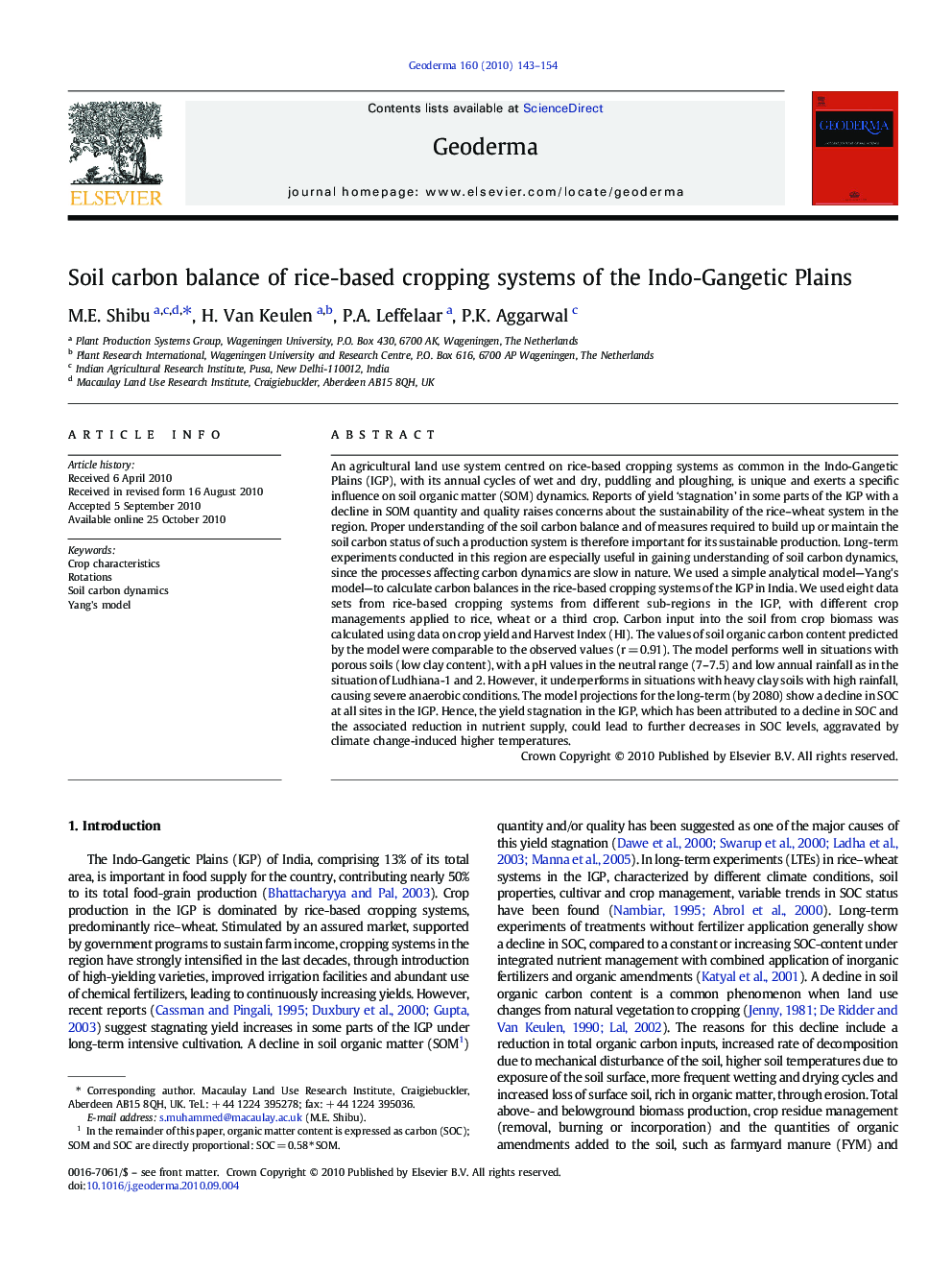| کد مقاله | کد نشریه | سال انتشار | مقاله انگلیسی | نسخه تمام متن |
|---|---|---|---|---|
| 4574360 | 1332485 | 2010 | 12 صفحه PDF | دانلود رایگان |

An agricultural land use system centred on rice-based cropping systems as common in the Indo-Gangetic Plains (IGP), with its annual cycles of wet and dry, puddling and ploughing, is unique and exerts a specific influence on soil organic matter (SOM) dynamics. Reports of yield ‘stagnation’ in some parts of the IGP with a decline in SOM quantity and quality raises concerns about the sustainability of the rice–wheat system in the region. Proper understanding of the soil carbon balance and of measures required to build up or maintain the soil carbon status of such a production system is therefore important for its sustainable production. Long-term experiments conducted in this region are especially useful in gaining understanding of soil carbon dynamics, since the processes affecting carbon dynamics are slow in nature. We used a simple analytical model—Yang's model—to calculate carbon balances in the rice-based cropping systems of the IGP in India. We used eight data sets from rice-based cropping systems from different sub-regions in the IGP, with different crop managements applied to rice, wheat or a third crop. Carbon input into the soil from crop biomass was calculated using data on crop yield and Harvest Index (HI). The values of soil organic carbon content predicted by the model were comparable to the observed values (r = 0.91). The model performs well in situations with porous soils (low clay content), with a pH values in the neutral range (7–7.5) and low annual rainfall as in the situation of Ludhiana-1 and 2. However, it underperforms in situations with heavy clay soils with high rainfall, causing severe anaerobic conditions. The model projections for the long-term (by 2080) show a decline in SOC at all sites in the IGP. Hence, the yield stagnation in the IGP, which has been attributed to a decline in SOC and the associated reduction in nutrient supply, could lead to further decreases in SOC levels, aggravated by climate change-induced higher temperatures.
Research Highlights
► A simple first order equation for organic matter decomposition used in this study, has the advantage of requiring a limited number of parameters, while satisfactorily describing long-term SOC dynamics.
► The sites with initially low (≤ 5 g kg–1) organic C contents (Ludhiana-1, Ludhiana-2, Ludhiana-3, and Samastipur) show an increase in SOC under cultivation, since the organic carbon demand to maintain the initial level is low, and a moderate yield level with the associated carbon input increases the organic carbon content, even without additional external inputs. Sites with relatively high SOC contents (> 5 g kg–1, Pantnagar, Nadia, and Barrackpore) at the start of cultivation, SOC declines when only mineral fertilizers are applied.
► The model results show an increase in SOC contents in the northern parts (Ludhiana and Karnal) by 2020 and a decline in all other parts of the IGP and a decline at all sites in the in the long-term (by 2080).
Journal: Geoderma - Volume 160, Issue 2, 15 December 2010, Pages 143–154